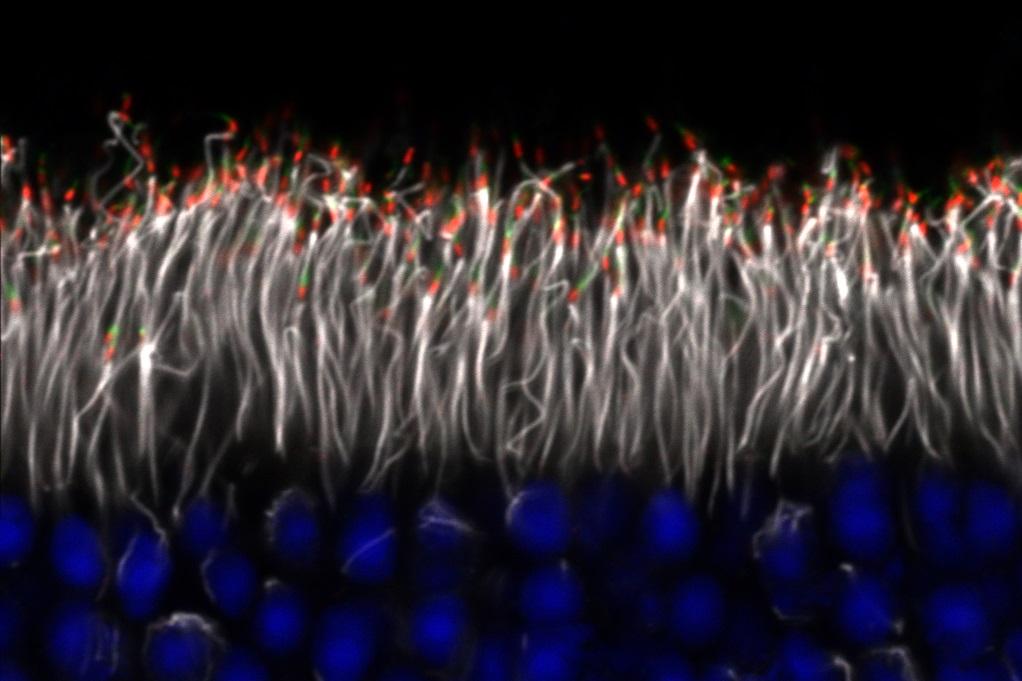Retinitis Pigmentosa in Children

How Would You Describe the Eyesight of Someone with RP, and How Will My Child Function with RP?
Before discussing the visual symptoms of retinitis pigmentosa, it is important to understand the emotional impact of RP. Your child may be a teenager, already in a turbulent season of life, when they hear, “You are losing your vision and may go blind.” Encourage your child to identify all feelings instead of suppressing them, connect with other teens or adults with RP, and utilize professional counseling. There is life beyond vision loss, though it may take much grieving (occurring all over again when vision noticeably deteriorates) and time before the entire family recognizes it.
RP typically manifests with poor vision in dimly lit environments, termed “night blindness.” Traveling by car, bike, or foot, performing tasks, and recognizing people or objects becomes increasingly complex in dim light.
Orientation and mobility training becomes necessary to navigate safely using a cane and public transportation. The use of an infrared night scope may further aid evening travel. Additionally, a well-lit room and additional use of task lighting (lamps or other lights) will be helpful for the individual to read, obtain details, and utilize vision to participate in activities.
Progressive Peripheral Field Loss
RP typically advances to include progressive peripheral field loss. An individual with loss of peripheral vision has some degree of “tunnel vision,” making it difficult to gather comprehensive visual information in an environment. They will benefit from learning visual efficiency skills such as scanning an environment in an organized manner and possibly utilizing a reverse telescope to minimize the appearance of an image to see its entirety within the remaining field of vision. Additionally, the individual is likely to bump into side-lying and low-lying obstacles; they should utilize orientation and mobility skills, such as using a cane, to avoid obstacles.
As RP progresses, sharp visual acuity, central vision, and color vision may deteriorate, possibly resulting in total blindness.
Loss of Sharp Visual Acuity
Loss of sharp visual acuity makes it difficult to recognize faces and facial expressions, access information from a classroom board or wall, view a speaker or performance, read print, and perform visual tasks of fine detail, such as threading a needle. To best use remaining vision, your child can be taught to increase the contrast of the environment, increase the contrast of print by using a CCTV or screen-magnification software, and increase task lighting. Several wearable digital low-vision aids are also available to optimize vision and improve magnification, contrast, and other features. Furthermore, for lectures and similar activities, your teen should select seating for optimal viewing, with good lighting and possibly closer to the front, depending on what needs to be viewed.
Loss of Central and Peripheral Vision
If your child loses central vision and peripheral vision, they must learn to complete tasks without the use of vision. Your child may be taught braille, screen-reading software to use the computer, and techniques for performing life skills and academic tasks from the teacher of students with visual impairments and orientation and mobility specialist. Better yet, your child should begin learning the aforementioned accommodations in preparation for complete loss of sight.
Sunlight and Glare
Throughout the progression of RP, it is common for bright sunlight and glare to cause significant discomfort and inability to see (this is known as a “white out”). Your child may benefit from specialized sunglasses (amber-tinted lenses), the use of a brimmed hat outdoors, and shutting blinds indoors if glare is present.
Needed Assessments
Your child’s teacher of students with visual impairments (sometimes known as a teacher of the visually impaired (TVI) should perform a functional vision assessment to determine how your child uses their vision in everyday life and a learning media assessment to determine which senses your child primarily uses to get information from the environment. These assessments and an orientation and mobility assessment conducted by a mobility specialist will give the team information needed to make specific recommendations for your child to access learning material and their environment. Often, these assessments are arranged by the school in many public school districts.
Edited and Updated in 2024 by Abigal Fahim, MD
Resources for Families of Children with RP